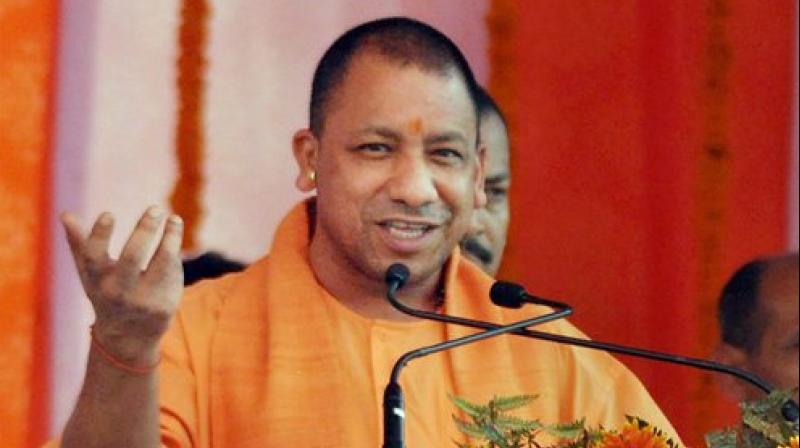Reflections: The folly of renaming - Will we ever learn?

It’s not often that something US President Donald Trump says can be recommended to India’s leaders. But his comment on the futility of trying to rewrite the past certainly deserves the attention of myopic ruling party politicians like Yogi Adityanath, who may believe he has erased the Mughals from history by transforming Mughal Sarai into Pandit Deen Dayal Upadhyay Nagar, or Maheish Girri, the East Delhi MP, responsible for renaming Aurangzeb Road in New Delhi after A.P.J. Abdul Kalam. “Sad to see the history and culture of our great country being ripped apart with the removal of our beautiful statues and monuments” Mr Trump tweeted last week. “You can’t change history”, he warned, and then, displaying rare perspicacity, added, “but you can learn from it”. The rulers of contemporary India can certainly learn from Aurangzeb that the liberal temper of this country will not put up with the straitjacket of a single religious discipline. That Mr Girri replaced one Muslim name with another only exposed a saffron politician’s predictable communal blinkers. He didn’t realise he was tampering with national — not just sectarian — history.
We’ll see more such propagandist exercises now that the Uttar Pradesh chief minister has struck a brave blow at all the Mughals and their sarais instead of tinkering about with an emperor here and a consort there. If Aurangzeb has been banished, his father must be too. Without Shah Jahan, there can’t be a monument to his beloved Mumtaz Mahal. One can see Yogi Adityanath reaching out to Agra, having taken his lesson from the late P.N. Oak, that great and glorious fiction writer of the Hindu rashtra that never was. Oak argued that far from being Mughal, the Taj Mahal is really a corrupt form of the Sanskrit “Tejo Mahalay”, signifying a Shiva temple. Thanks to him, we can rest content when Pakistanis stir up mischief in Kashmir or Chinese troops sneak into Doklam that Hindus once conquered Italy, and that even Westminster Abbey was a Shiva temple. Surely, the Prime Minister has been remiss in not bestowing some posthumous honour on a man who anticipated India’s glowing present and glorious future under Mr Modi’s benediction and tried to invent a Hindu past that lives up to it?
Governments that are concerned with mundane matters such as the material welfare of their people might frown on such creativity. Singapore, the only ex-colony to make a success of independence according to Jagat Mehta, the former foreign secretary, believes that chopping and changing the past erodes investor confidence. Singaporeans recall how James Putucheary, the India-born, Santiniketan-educated radical head of Singapore’s first Industrial Promotion Board, proposed soon after independence to demolish the statue of Stamford Raffles, the island-state’s British founder. “That was left over by the colonialists” Putucheary told two United Nations economists, Albert Winsemius and Tang I-Fang. “What would you think if we replaced it with a statue of Marx or Lenin?” It was a troubling thought, and Lee Kuan Yew says Winsemius accepted the job of chief economic adviser only on condition that the statue wasn’t disturbed. Raffles still strikes a heroic pose by the Singapore River, arms folded determinedly across his chest, symbolising continuity and stability.
Smaller men than Lee take a narrower view of history, being incapable of grasping that the cycle of events is not concerned with individual likes and dislikes. The past can’t be revised to suit a present that is forever changing. It cost West Bengal’s United Front government nothing in the late 1960s to rededicate the 165-ft British monument in Calcutta’s Maidan honouring General Sir David Ochterlony, who won Britain’s wars against Nepal, to shaheeds in the cause of revolution. Ireland’s revolutionaries were more honest. They didn’t like the column in the heart of Dublin to an English admiral, Horatio Nelson, and blew it up. As Calcutta’s roads were renamed and statues removed, small-time patriots had to be persuaded that the busts of the Twelve Caesars in Raj Bhavan didn’t represent former governors. They also thought at first that the statue of Minerva along with classical representations of justice, commerce, science and agriculture along the balustrade of Writers’ Buildings, the state secretariat, were colonial memsahibs.
Mumbai’s Kala Ghoda dominating the intersection of MG Road and Subhash Chowk also demonstrates the folly of such changes. Many protested when the large equestrian statue was removed in a fit of patriotic zeal that the horse was a prominent landmark and more famous than its royal rider, King Edward VII. That the name survives to denote a district and cultural enclave and that no one thinks of Kala Ghoda as a colonial memorial shows that memory can’t be blacked out because it may be inconvenient for some. Of course even today’s India hasn’t scaled the absurd heights of the US where a popular sports presenter called Robert Lee, obviously of Chinese extraction, was pulled from an assignment to cover a Virginia football match after the recent uproar over the statue of General Robert Lee, the Confederate commander in the 1861-65 Civil War. But India is far from matching enlightened Britain where a nine-ft bronze Mahatma Gandhi, costing more than a million pounds, was erected in London’s Parliament Square two years ago. This wasn’t the first either. Burying yesterday’s enmities, the British installed a modest bust of Gandhi in Tavistock Square in Bloomsbury nearly 50 years ago. That generosity is so far removed from India’s vicious inter-party hatreds that I am not surprised to be asked by informed foreigners how long the Indira Gandhi International Airport will retain its name. I tell them it’s my guess the Prime Minister’s advisers are too canny to make an obvious change that would expose the BJP’s weakness.

